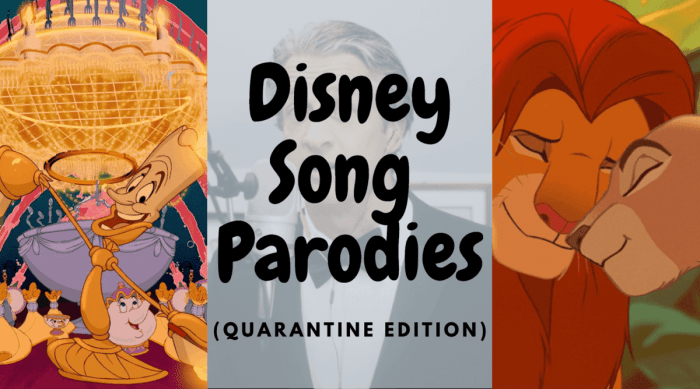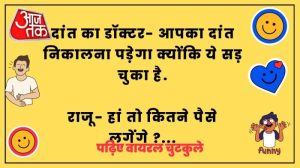
Ever wondered about the wacky world of parody music videos? These aren’t just silly imitations; they’re clever commentaries, hilarious reinterpretations, and sometimes even surprisingly insightful social critiques, all wrapped up in catchy tunes and often ridiculous visuals. From “Weird Al” Yankovic’s legendary career to viral sensations on YouTube, parody music videos have a rich history, a unique style, and a surprising impact on the music industry itself.
Get ready for a journey into the absurd, the brilliant, and the downright funny!
We’ll explore everything from the legal minefield of copyright to the creative genius behind crafting a truly memorable parody. We’ll delve into the history of the genre, analyzing how styles have evolved and the impact of key players. We’ll examine different comedic techniques, the role of social commentary, and how these videos are made and shared in the digital age.
Prepare to laugh, learn, and maybe even discover your new favorite comedic masterpiece!
Defining Parody Music Videos
Parody music videos are a unique form of entertainment that cleverly blend humor, satire, and creative expression with pre-existing musical works. They take a popular song and reinterpret its lyrics, visuals, or both, often to comedic or satirical effect, creating a new work that comments on the original or on broader cultural themes. Unlike cover versions, which aim for a faithful recreation, parodies actively transform the original material to create something distinctly different and often humorous.Parody music videos are a distinct genre, separate from other forms of video content like fan-made tributes or remixes.
Fan tributes typically celebrate the original work, while remixes focus on manipulating the audio or visual elements of the original without necessarily changing the lyrical content or core message. Parodies, however, intentionally alter the original to create a new meaning, often with a critical or humorous perspective.
Legal Aspects of Parody Music Videos and Copyright Law
Creating a parody music video involves navigating the complex landscape of copyright law. Copyright protects musical compositions (the melody and lyrics) and sound recordings (the actual performance). Fair use is a crucial legal doctrine that allows for limited use of copyrighted material without permission, and parody is often considered a form of fair use. However, determining whether a parody qualifies for fair use is a complex case-by-case analysis, dependent on several factors.
These factors include the purpose and character of the use, the nature of the copyrighted work, the amount and substantiality of the portion used, and the effect of the use upon the potential market for or value of the copyrighted work. A successful parody typically transforms the original work significantly, adding new meaning and expression, and does not directly compete with the original in the marketplace.
Courts have consistently ruled that transformative parodies are more likely to qualify for fair use. For example, “Weird Al” Yankovic’s extensive catalog of parody songs and videos serves as a well-established precedent for successful fair use claims. He frequently obtains permission from artists, but his history shows the courts’ understanding of transformative parody.
Key Elements of a Successful Parody Music Video
Several key elements contribute to the success of a parody music video. First, a strong comedic concept is crucial. The humor should be clear, relatable, and ideally, insightful. The parody needs a clever premise that allows for both faithful enough referencing of the original and sufficient transformation to create a new comedic experience. Second, effective execution is vital.
This includes high-quality video production, engaging visuals, and skillful editing that seamlessly integrates the parody’s new elements with the original song. Clever costuming, set design, and acting also enhance the overall impact. Finally, the parody should strike a balance between referencing the original to ensure recognizability and transforming it enough to create a new, independent artistic expression. A purely derivative work, closely mimicking the original without adding a new creative element, is less likely to qualify for fair use and is less likely to be considered successful as a parody.
For example, a successful parody might change the lyrics to reflect a contemporary social or political issue, or it might change the visuals to satirize the original music video’s aesthetic.
Historical Overview of Parody Music Videos
The evolution of the parody music video is a fascinating reflection of popular culture, mirroring trends in music, technology, and social commentary. From humble beginnings as simple home-made productions to sophisticated, high-budget affairs, the genre has consistently pushed creative boundaries and provided a platform for both comedic genius and sharp social critique. This overview explores key moments in its development, highlighting influential artists and stylistic shifts.
The earliest forms of parody music videos, predating widespread video technology, relied on simple filmed performances or even just audio recordings with accompanying visual elements. The advent of MTV in the early 1980s, however, proved to be a game-changer, providing a readily available platform for distribution and a visual format perfectly suited to the parody genre’s inherently playful nature.
Early Parody Music Videos (1980s-Mid 1990s)
Early parody music videos often lacked the polished production values of their mainstream counterparts. They frequently relied on low-budget aesthetics, utilizing readily available props and locations, and focusing on comedic timing and clever lyrics rather than elaborate visuals. This era saw the rise of comedic acts using existing music videos as a foundation for their parodies. The humor often derived from simple wordplay, exaggerated character portrayals, and relatable situations.
Think “Weird Al” Yankovic’s early works, which often featured simple sets and costumes but relied heavily on his sharp wit and musical talent. His videos, though low-budget compared to today’s standards, were incredibly effective in capturing the zeitgeist and resonating with audiences. For instance, “Eat It” (a parody of Michael Jackson’s “Beat It”) perfectly captured the spirit of the 1980s while simultaneously poking fun at the excesses of the era.
Contemporary Parody Music Videos (Mid 1990s-Present)
The rise of digital video editing and readily accessible technology has dramatically altered the landscape of parody music videos. Contemporary productions often boast high production values, comparable in quality to mainstream music videos. This allows for more elaborate sets, costumes, special effects, and intricate choreography. The humor, while still relying on wordplay and satire, often incorporates more sophisticated techniques like meta-commentary and self-aware humor.
Internet platforms like YouTube have also democratized the creation and distribution of parody videos, leading to a vast and diverse range of styles and approaches. While “Weird Al” Yankovic continues to be a major force, a new generation of creators have emerged, utilizing platforms like YouTube and TikTok to build large followings and create parodies that reflect the changing tastes and concerns of contemporary society.
Parody Music Videos Impacting Popular Culture
Several parody music videos have had a significant cultural impact. “Eat It” by “Weird Al” Yankovic, as previously mentioned, became a cultural touchstone of the 1980s. Similarly, many of his other parodies, such as “Like a Surgeon” (a parody of Madonna’s “Like a Virgin”) achieved widespread popularity and recognition, influencing subsequent parody artists and demonstrating the genre’s ability to comment on and shape popular culture.
The rise of internet-based parody videos has also led to viral sensations, with certain videos achieving millions of views and sparking widespread online discussions. These videos often reflect current trends and events, using humor to engage with pressing social and political issues. The impact is often felt through increased awareness of the original song and artist, but also through the parody’s ability to generate conversations and reinterpret the original work within a different cultural context.
Types and Styles of Parody Music Videos
Parody music videos, a vibrant subgenre of music video production, demonstrate a fascinating interplay between creative imitation and comedic invention. Their effectiveness hinges on a delicate balance: recognizing the source material while simultaneously transforming it into something uniquely humorous and engaging. This requires a keen understanding of the original song’s style, its cultural impact, and the potential for comedic exaggeration or ironic juxtaposition.The classification of parody music videos can be approached through several lenses, primarily focusing on the target material and the employed comedic strategies.
Stylistic choices are crucial in determining the overall tone and impact, ranging from lighthearted silliness to biting social commentary.
Target Material and Comedic Approach
Parody music videos draw their comedic power from the unexpected. They achieve this by cleverly repurposing familiar songs, often altering lyrics and visuals to create a new narrative that contrasts sharply with the original. One primary classification method considers the type of song being parodied: popular hits, classic songs, genre-specific tunes, or even lesser-known tracks elevated to unexpected fame through parody.
The comedic approach can range from simple wordplay and slapstick humor to more sophisticated satire and social commentary. For example, a parody might replace the romantic lyrics of a love ballad with humorous descriptions of everyday frustrations, or it might satirize a political figure by using a popular song as a backdrop for pointed criticism.
Stylistic Choices: Humor, Satire, and Social Commentary
The stylistic choices employed in parody music videos are multifaceted. Humor can manifest as visual gags, absurd costumes, exaggerated acting, or clever wordplay within the lyrics. Satire, a more pointed form of humor, uses parody to critique societal norms, political figures, or cultural trends. Social commentary, a related approach, leverages the popularity of the source material to highlight specific social issues or injustices, often with a comedic edge to make the message more palatable and memorable.
For instance, a parody might use a catchy pop song to subtly critique consumerism, or a patriotic anthem to comment on political polarization. The effectiveness of these approaches depends heavily on the execution; a poorly executed parody risks falling flat, while a well-crafted one can achieve both comedic success and impactful social commentary.
Frequently Parodied Song Types
Certain genres and types of songs are more frequently parodied than others. Pop songs, with their catchy melodies and widely recognizable lyrics, are a common target. Their inherent structure lends itself well to lyrical alteration, allowing for seamless integration of humorous or satirical content. Similarly, love ballads, with their often predictable themes and dramatic expressions, provide ample opportunity for ironic contrast and comedic subversion.
Anthems and patriotic songs, due to their strong emotional resonance, can be effectively parodied to highlight hypocrisy or critique societal values. Finally, the resurgence of specific songs through viral trends or cultural moments often makes them ripe for parody, demonstrating the dynamic relationship between current events and the creative use of pre-existing musical works. The “Weird Al” Yankovic catalog serves as a prime example, showcasing the versatility of parody across various musical genres and cultural contexts.
His parodies often target top 40 hits, effectively demonstrating how popular music can be both a source of entertainment and a target for comedic and social critique.
The Role of Humor and Satire in Parody Music Videos
Parody music videos thrive on the skillful blend of humor and satire, cleverly repurposing familiar songs and visuals to create comedic and often socially relevant statements. The effectiveness of these videos hinges on the creators’ ability to manipulate expectations, utilizing various comedic techniques to generate laughter and provoke thought. This often involves a sophisticated understanding of the original material and a keen eye for social and political trends.The comedic effect in parody music videos is achieved through a multifaceted approach.
It’s not just about silly costumes and exaggerated movements, although those certainly play a part. The humor is often layered, incorporating wordplay, visual gags, and ironic juxtapositions to create a rich comedic experience. The success of a parody relies on the audience’s familiarity with the original song and its cultural context, allowing for a deeper appreciation of the comedic choices made by the creators.
This familiarity forms the foundation upon which the humor is built, allowing for clever subversion and unexpected twists.
Comedic Techniques in Parody Music Videos
Parody music videos employ a diverse range of comedic techniques to achieve their humorous effect. These techniques are often interwoven, creating a complex tapestry of comedic elements. Wordplay, slapstick, and irony are just a few of the tools in the parody artist’s arsenal. Consider, for instance, “Weird Al” Yankovic’s parodies, which frequently rely on clever word substitutions and puns to create hilarious reinterpretations of popular songs.
The visual humor, on the other hand, can range from slapstick physical comedy to subtly ironic visual cues that enhance the satirical message.
Wordplay and Punctuation
Wordplay forms the backbone of many successful parodies. The alteration of lyrics, often involving puns and double entendres, is a primary method of generating humor. This requires a deft touch, as the wordplay must be both clever and easily understood by the audience. For example, a parody might replace words in a love song with terms related to food, creating a humorous juxtaposition.
The effectiveness of this technique depends on the inherent absurdity of the substitution and its connection to the original meaning.
Slapstick and Visual Humor
Slapstick, the classic form of physical comedy involving exaggerated movements and pratfalls, is another staple of parody music videos. This can range from simple sight gags to elaborate choreographed sequences of comedic mishaps. The visual humor often complements the lyrical changes, enhancing the overall comedic effect. Think of a parody where the performers engage in exaggerated dance moves or stumble clumsily, adding a layer of visual humor to the already altered lyrics.
Irony and Juxtaposition
Irony, the use of words to convey a meaning that is the opposite of its literal meaning, plays a crucial role in creating satirical effect. Parody music videos often use irony to subvert the original song’s message, creating a humorous contrast between the original intent and the parody’s interpretation. This is frequently achieved through juxtaposition, placing seemingly incongruous elements together to highlight the absurdity of the situation.
For example, a parody might depict a serious topic like war using upbeat, cheerful visuals, creating an ironic contrast that underscores the absurdity of the situation.
Social and Political Commentary in Parody Music Videos
Parody music videos are not simply frivolous entertainment; they often serve as powerful vehicles for social and political commentary. By satirizing popular culture and current events, these videos can offer insightful critiques of societal norms and power structures. The humor acts as a mask, allowing for the delivery of potentially controversial messages in a palatable and engaging way.
The use of familiar songs and imagery makes the commentary accessible to a wider audience, ensuring that the message reaches beyond the niche of political activists. Many parodies have tackled issues like consumerism, political corruption, and social inequalities, using humor to make these serious topics more digestible and thought-provoking.
Production and Distribution of Parody Music Videos
Creating a hilarious and successful parody music video involves a multifaceted process, from the initial spark of an idea to its widespread dissemination across various digital platforms. The entire journey, from conception to viral fame, hinges on a well-executed production and a savvy distribution strategy. Let’s delve into the details.
The production of a parody music video typically follows a three-stage process: pre-production, filming, and post-production. Each stage is crucial in ensuring the final product is both entertaining and of high quality.
Pre-Production of Parody Music Videos
Pre-production lays the groundwork for a smooth and efficient filming process. This stage involves selecting the source material (the original music video being parodied), writing the parody lyrics and script, securing necessary permissions (crucial to avoid legal issues), assembling a creative team (director, actors, camera crew, etc.), and creating a detailed shot list and storyboard. A well-defined budget and timeline are also essential aspects of pre-production.
For instance, a low-budget parody might utilize readily available props and locations, while a higher-budget production might involve elaborate set designs and professional costumes. Thorough planning at this stage can significantly reduce issues during filming and post-production.
Filming of Parody Music Videos
The filming phase brings the pre-production plan to life. This stage involves capturing the footage according to the storyboard and shot list. The success of this stage depends heavily on the coordination of the entire crew and the acting talent of the performers. Good lighting, sound recording, and camera work are all critical components. For example, a scene might require multiple takes to achieve the desired comedic timing and visual effect.
Careful attention to detail during filming can greatly simplify the editing process later on.
Post-Production of Parody Music Videos
Post-production involves the editing, sound mixing, and color grading of the footage. This is where the raw footage is transformed into a polished final product. Editing software is used to assemble the scenes, add visual effects (like comedic transitions or text overlays), and fine-tune the pacing and rhythm of the video. Sound mixing balances the audio elements, ensuring clear dialogue and a well-integrated soundtrack.
Color grading enhances the visual appeal of the video, creating a consistent look and feel. For instance, a retro-themed parody might utilize vintage color filters to enhance the overall aesthetic. Finally, the video is rendered into a suitable format for distribution.
Distribution Platforms for Parody Music Videos
Parody music videos, thanks to the digital revolution, enjoy a vast array of distribution channels. These platforms differ significantly in their reach and audience engagement.
The most prominent platforms include YouTube, Vimeo, TikTok, and Facebook. YouTube, with its massive user base and established video-sharing infrastructure, remains the dominant platform for many parody creators. TikTok, with its short-form video format, provides a different avenue for quick, punchy parodies to gain viral traction. Facebook, while not primarily a video platform, still offers significant reach through shared posts and targeted advertising.
Vimeo, often favored for its higher-quality video hosting, provides a space for creators aiming for a more discerning audience.
Impact of Digital Platforms on Parody Music Videos
Digital platforms have revolutionized the accessibility and popularity of parody music videos. The ease of uploading and sharing videos online has dramatically lowered the barriers to entry for creators, allowing for a wider range of voices and perspectives to be represented. The viral nature of online video sharing means that a well-made parody can reach a global audience in a short period, something unimaginable before the rise of the internet.
Moreover, platforms offer built-in analytics, allowing creators to track their videos’ performance and refine their strategies accordingly. The democratizing effect of these platforms has led to a significant increase in the production and consumption of parody music videos. The rise of meme culture, further fueled by these platforms, has also made parody an increasingly prevalent form of online expression.
The Impact of Parody Music Videos on the Music Industry
Parody music videos, while often perceived as lighthearted entertainment, exert a surprisingly significant influence on the mainstream music industry. Their impact extends beyond mere comedic relief, affecting artist branding, legal landscapes, and even the commercial success of the original songs they satirize. This influence is multifaceted and warrants a closer examination.Parody videos can significantly impact an artist’s brand image, both positively and negatively.
A well-executed parody can generate considerable buzz and renewed interest in the original song, effectively extending its lifespan and boosting its popularity. Conversely, a poorly conceived or offensive parody can damage the original artist’s reputation and alienate their fanbase. The impact is heavily dependent on the quality of the parody, its comedic timing, and its overall message. The line between clever satire and harmful mockery is often thin, and the consequences can be far-reaching.
Artist Branding and Parody Videos
Parody music videos can act as powerful, albeit unpredictable, tools for artist branding. A successful parody can introduce a lesser-known artist to a wider audience, leveraging the recognition of the original song to gain exposure. For example, a parody that cleverly integrates the parodist’s own style and brand into the existing framework of the original song can create a synergistic effect, benefiting both the original artist (through increased visibility) and the parodist (through increased fanbase).
However, a poorly executed parody might backfire, associating the original artist with low-quality content or even offensive material, potentially harming their brand image. The success of this strategy relies heavily on the creative execution and the overall message conveyed.
Legal Implications of Parody Music Videos
The legal landscape surrounding parody music videos is complex and often contentious. Copyright law dictates that fair use allows for the transformative use of copyrighted material, provided it doesn’t unfairly compete with the original work. Determining whether a parody constitutes fair use often depends on factors such as the transformative nature of the parody, the amount of copyrighted material used, the effect on the market for the original work, and the purpose and character of the use.
Many successful parodies walk a fine line, relying on the transformative nature of their commentary to justify their use of copyrighted music and lyrics. Conversely, parodies that are deemed too similar to the original, or that are used for commercial purposes that directly compete with the original, can face legal challenges and potential lawsuits. The case law surrounding parody is extensive and constantly evolving, making it crucial for creators to understand the legal nuances involved.
Parody Videos and Original Song Popularity
Numerous instances demonstrate the potential of parody music videos to boost the popularity of the original song. A well-known example involves the song “Barbie Girl” by Aqua. While countless parodies exist, the sheer number of parodies created and viewed actually served to increase awareness and popularity of the original song among a new generation. This is particularly true when parodies use social media platforms, leading to increased viewership and viral sharing, thus exposing the original song to a much wider audience.
However, it’s important to note that not all parodies lead to increased popularity for the original song. The impact depends on various factors, including the quality of the parody, the platform it’s shared on, and the overall cultural context. A poorly executed parody might have the opposite effect, diminishing the original song’s appeal.
Entertainment & Humor
Parody music videos thrive on their ability to cleverly manipulate comedic techniques to create laughter and engage viewers. The humor isn’t just slapstick; it’s often layered, employing irony, satire, and absurdity to critique, celebrate, or simply playfully riff on the original music video and its cultural context. Understanding these comedic elements is key to appreciating the artistry and impact of the genre.The effectiveness of a parody hinges on its ability to skillfully blend recognizable elements of the original with unexpected twists and turns.
This often involves a deep understanding of the original song’s meaning, its visual style, and the cultural significance it holds. By cleverly subverting expectations and employing various comedic devices, parody creators successfully generate humor that ranges from subtle wit to outright silliness.
Comedic Techniques in Parody Music Videos
Parody music videos utilize a range of comedic techniques to achieve their humorous effect. Absurdity, for example, involves creating scenarios that defy logic or reality, often leading to unexpected and hilarious outcomes. Irony plays a crucial role, creating a contrast between expectation and reality, often highlighting the absurdity of the original song’s message or its cultural impact in a new light.
Satire, a more pointed form of humor, uses exaggeration and ridicule to criticize societal norms, political figures, or cultural trends, often using the original song as a vehicle for this commentary.
Comparative Analysis of Comedic Elements
The following table compares different parody music videos and their use of specific comedic elements:
| Parody Music Video | Absurdity | Irony | Satire |
|---|---|---|---|
| (Example 1: A parody of a serious ballad turned into a goofy dance number) | Characters in ridiculous costumes performing nonsensical actions. | The juxtaposition of the somber tone of the original with the upbeat, silly choreography. | (If applicable, describe any satirical element, e.g., mocking the seriousness of the original’s themes) |
| (Example 2: A parody of a pop anthem highlighting consumerism) | Over-the-top product placement and exaggerated consumer behavior. | The contrast between the original’s empowering message and the parody’s critique of materialistic values. | Satirizing the culture of consumerism and its impact on society. |
| (Example 3: A parody of a political campaign song) | Humorous misrepresentation of political figures and events. | The use of the original’s upbeat melody to convey a message of political incompetence. | Direct satire of political rhetoric and policies. |
Examples of Comedic Effects in Specific Scenes
Consider a scene from a parody of a dramatic power ballad where the singer, instead of belting out emotional lyrics, is shown struggling to reach a high note while simultaneously juggling flaming bowling pins. The absurdity of the situation, juxtaposed with the original’s serious tone, creates a comedic effect. The incongruity is heightened by the contrast between the expected dramatic performance and the slapstick reality.Another example might be a parody of a romantic music video where the lavish setting and romantic gestures are replaced with mundane, everyday activities, like doing laundry or arguing over the remote.
This ironic contrast between the original’s idealized romance and the parody’s depiction of a realistic relationship generates humor. The audience laughs at the unexpected subversion of expectations and the relatable depiction of everyday life.
Audience Reception and Impact of Parody Music Videos
Parody music videos, existing at the intersection of music, humor, and social commentary, owe their existence and evolution to audience reception. The success or failure of a parody often dictates not only its own lifespan but also influences the style and content of future creations. Understanding audience reaction is crucial to grasping the full impact of this unique genre.Audience reception shapes the creation and evolution of parody music videos in several significant ways.
Positive audience response, measured through views, shares, and comments, provides validation and encourages creators to continue producing similar content, potentially refining their techniques based on feedback. Conversely, negative or indifferent reception might lead creators to adjust their approach, experimenting with different styles, targets, or humor types to better resonate with their audience. This dynamic interplay between creator and audience fuels the constant evolution of parody, ensuring its adaptability to changing tastes and cultural trends.
Social Media’s Role in Virality and Longevity
Social media platforms have fundamentally altered the landscape of parody music video dissemination and longevity. Platforms like YouTube, TikTok, and Instagram offer unparalleled reach, allowing even independently produced parodies to achieve viral status. The ease of sharing and embedding these videos on other platforms further amplifies their exposure, extending their lifespan far beyond what was possible in the pre-internet era.
The algorithms of these platforms also play a crucial role, prioritizing content that generates high engagement, effectively determining which parodies gain widespread traction and which fade into obscurity. A prime example is the rapid spread of numerous parodies during viral moments, like a specific song trending globally. The instant feedback loop provided by social media allows creators to gauge immediate audience reaction, facilitating quick adjustments and maximizing impact.
Cultural Significance and Lasting Impact of Specific Parody Music Videos
Certain parody music videos transcend their immediate comedic purpose, achieving a level of cultural significance that extends far beyond their initial release. For instance, “Weird Al” Yankovic’s extensive catalog boasts several examples. His parody of Michael Jackson’s “Beat It,” titled “Eat It,” not only captured the comedic essence of the original but also became a standalone hit, achieving its own cultural recognition.
This is largely due to its clever lyrics, relatable themes, and masterful replication of the original’s visual style. The video’s success wasn’t merely a fleeting moment; it solidified Yankovic’s position as a parody master and continues to be referenced and enjoyed decades later, demonstrating the lasting impact a well-executed parody can have on popular culture. Similarly, numerous parodies targeting specific political or social events gain prominence due to their timely commentary, reflecting and shaping public discourse.
These videos, even if initially short-lived in their viral moment, can become valuable historical artifacts, documenting the cultural zeitgeist of their era. The ability to revisit these parodies years later offers unique insights into past trends and societal reactions.
The Future of Parody Music Videos

Parody music videos, a vibrant form of digital entertainment, are poised for significant evolution in the coming years. The convergence of technology and shifting audience preferences will reshape how these videos are created, distributed, and consumed. We can expect to see a rise in innovative formats and a greater integration with interactive elements, pushing the boundaries of what’s possible within the genre.The digital landscape is constantly evolving, and parody music videos are no exception.
Several factors will shape their future, including advancements in AI-driven content creation, the rise of immersive technologies like virtual and augmented reality, and the ongoing evolution of social media platforms. These changes will impact not only the production process but also the way these videos are shared, discovered, and ultimately experienced by audiences.
AI-Generated Parody Music Videos
Artificial intelligence is rapidly transforming various aspects of the entertainment industry, and parody music videos are not immune. We can anticipate a rise in AI-powered tools that assist in the creation process, from generating lyrics and music to creating visual effects and even animating characters. For instance, imagine AI tools that can automatically generate lip-sync animations for a given song, allowing creators to produce parodies more quickly and efficiently.
This could lead to a democratization of parody video creation, enabling individuals with limited technical skills to produce high-quality content. Existing tools already offer aspects of this functionality, such as AI-powered music generation software, which could be combined with video editing software to streamline the process.
Immersive Technologies and Interactive Parody Videos
The increasing accessibility of virtual and augmented reality (VR/AR) technologies opens exciting possibilities for parody music videos. Imagine a parody video where the viewer can interact with the characters and environment, choosing different narrative paths or influencing the outcome of the story. This level of interactivity could significantly enhance viewer engagement and create a more personalized and memorable experience.
Think of a VR parody of a popular music video where the viewer becomes a participant in the story, actively influencing the events as they unfold. This could be achieved through haptic feedback, real-time 3D rendering, and motion tracking technology. While currently in its early stages, this represents a significant potential avenue for innovation in the genre.
The Rise of Short-Form Parody Videos
Platforms like TikTok and Instagram Reels have popularized short-form video content, impacting the length and style of many online videos. Parody music videos will likely adapt to this trend, with creators focusing on shorter, punchier clips designed to capture attention quickly and go viral. We might see a shift towards more meme-based parodies, relying on concise humor and easily digestible visual gags, optimized for the short-attention spans prevalent on these platforms.
The success of viral challenges and trends on these platforms demonstrates the potential for short-form parodies to achieve significant reach and engagement. Existing examples include short, comedic snippets set to popular audio tracks, which demonstrate the adaptability of parody to these formats.
New Forms of Parody Video Content
The future may also see the emergence of entirely new forms of parody video content. We could see a rise in interactive narrative parodies, utilizing branching storylines and viewer choices, or perhaps even AI-generated parodies that adapt to current events and trends in real-time. The integration of user-generated content could also become more prominent, allowing fans to contribute to the creation and evolution of parodies.
Imagine a collaborative parody where fans submit their own video clips or audio recordings, which are then integrated into a larger, community-created video. This would foster a stronger sense of community and potentially lead to more creative and diverse parodies.
Final Wrap-Up

So, there you have it – a whirlwind tour of the wonderfully weird world of parody music videos! From their humble beginnings to their current reign as viral sensations, these videos continue to entertain, challenge, and even influence the mainstream music industry. Their ability to blend humor, satire, and social commentary makes them far more than just funny clips; they’re a reflection of our culture, our times, and our enduring love for a good laugh.
So next time you stumble across a hilarious parody, remember the creativity, skill, and often daring legal maneuvering that went into its creation. And most importantly, enjoy the comedic genius!
FAQ Corner
How much does it cost to make a parody music video?
Costs vary wildly depending on production scale. A simple, DIY video can be made cheaply, while a high-production parody could cost thousands.
Can I use copyrighted music in my parody?
It’s a legal grey area. Fair use is a complex legal doctrine, and whether a parody qualifies depends on many factors. Consult a lawyer!
How do I get my parody music video to go viral?
There’s no magic formula, but strong comedic elements, clever editing, and promotion on social media are crucial.
What are some examples of famous parody music videos?
“Eat It” by “Weird Al” Yankovic is a classic, and countless others exist – search YouTube for a never-ending stream!





